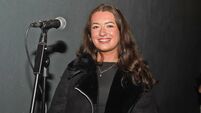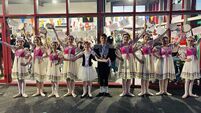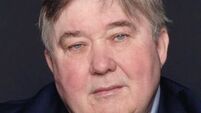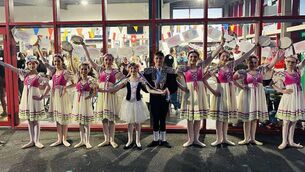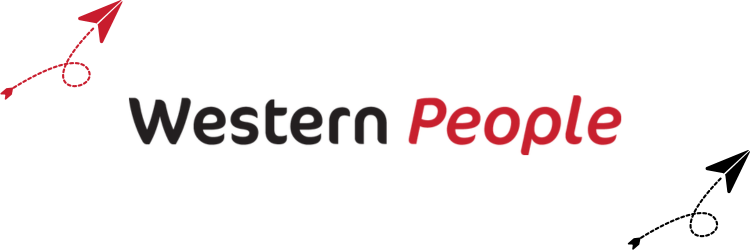The enduring legacy of the Kerry cow
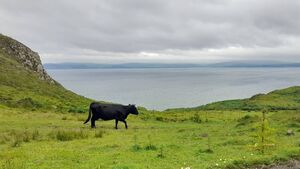
A Kerry cow on Rathlin Island as captured by Pat McCarrick.
When I was a child, we had a cow on the farm that had a taut temperament. She was flighty and hard managed in tight spaces. She was typical of our odd assortment of dairy cows and my father would condone her bad behaviour – while at the same time justifying her selection – by saying there was a drop of the Kerry breed in her.
My father could well have been right about our little crossbred black cow and if he was, her lineage extends a long way back in time. Maybe her nerves, like her genes, were stretched to their limit.
Kerry cattle are a rare dairy breed that are native to Ireland. They are believed to be one of the oldest breeds in Europe, probably derived from small black cattle brought to Ireland by Neolithic man. They were probably also the first cattle bred mainly for milk production. At that time, the climate of southern Ireland was suitable for milk production year-round. At that time also, the Celts had developed skills and techniques allowing them to store milk in the form of cheese and butter. The breed is probably descended from the Celtic Shorthorn, brought to Ireland as early as 2,000 BC. Earlier breeds had already been in Ireland for more than a thousand years before that.
These cattle were developed as a milking breed suited to the small subsistence farms of southern and western Ireland. They caused less damage to soils in high rainfall areas than larger breeds. Their globules of fat are very small which makes their milk very suitable for the production of cheese, butter and yoghurt. It is little wonder therefore that the breed was so suited to the needs of our ancient ancestors. In their time, it would appear our early farmers knew quite a bit about animal genetics.
In layman’s terms, the Kerry is like a smaller, all black version of the Friesian cattle we are familiar with today. The coat of the Kerry cow is almost entirely black, with a little white on the udder. The horns are whitish with dark tips. The Kerry Cattle Society provide some very interesting background on the breed in a piece under the heading, .
“It is thought that the Kerry is derived from the little black cow brought by Neolithic man in his migration northwards from the Mediterranean basin. There are close affinities with the Heren, the small black breed surviving in the high Alps, and with the fierce black bulls of the Camargue.
“While prehistoric man in Asia, North Africa and Europe was selecting and breeding cattle for draught and meat, the Celtic civilisation in Ireland was producing a breed of cattle for milk and dairy produce. The diet was based on milk and milk products; meat was rarely eaten. Records have been found which show that milk was preserved in various forms including cheese and butter. It was also treated with herbs and kept in jars underground. With the mild climate and long grazing season milk was produced almost all year round.” Kerry cows enjoy a reasonably long life, still strong and calving regularly at 14 and 15 years of age. They are extremely hardy and will out winter quite happily, growing a good coat of hair which keeps the cold out. Their agility enables them to travel safely over rough ground.
The cows rarely have trouble calving, for there is more room in the pelvis than would appear from the size of the cow. The calves are easily reared and the bullocks will fatten, though they may take four to six months longer than other breeds. They make excellent quality beef weighing up to 550kg.
Several Irish farmhouse cheese makers use Kerry milk. The average milk yield is between 3,000 and 3,700 litres at 4% butterfat. However, there are quite a number of cows capable of yielding over 4,500 litres. Not bad, given the average milk yield for a dairy cow in Ireland today is around 5,700 litres per year.
The Kerry Cattle Society of Ireland was formed in 1917 to promote and maintain the purity of the breed. Despite this, by 1983 there were only around 200 pedigree Kerry cattle in the world, but numbers have since increased. In 2002, the Society registered as a Co-Op and became The Kerry Cattle Society Ltd., in order to be better able to carry out its work. The Society now has membership in Ireland, Britain, USA and Canada.
Ireland´s largest herd of Kerry cattle can be seen on the Muckross Estate in Killarney National Park, where there are over 100 Kerry cattle on display. The Kerry herd are used there as a grazing tool to establish species-rich meadows. The following is an account from Farmleigh House of how the Kerry herd was established in Muckross.
“Arthur Rose went to live in Muckross in 1910 and he set about establishing a herd of Kerry cattle to which he was devoted. They were his pride and joy. The herd was supervised by a Scotsman, Andrew McLeod. Milking was every evening and done by hand by dairymaids. Milk was brought to the dairy and then put in a separator. It was available free of charge to anyone employed on the estate.” In 2004, Radio Kerry reported on a migration of some of this herd, from Kerry to Dublin. The whole transition was a clever move to both showcase the ancient breed and ensure its future survival.
“A herd of Kerry cows is being raised at Farmleigh House in Dublin. The herd which was bred at Muckross in Killarney was chosen to enable the people of Dublin see the almost extinct herd. The breed is famous for its ability to survive and milk well in rough territory and is distinguished by its black head. Its traditional home was the slopes of the Kerry Mountains.” So, these Kerry cattle were not making the trip to Dublin for the first time but were in fact returning to a place they once called home. The folks at Farmleigh take up the story.
“When the State took over Farmleigh, the tradition of livestock here continued. The Kerry cow represents part of our cultural heritage, and over centuries it is the product of human and natural selection under difficult and demanding environmental conditions. The Kerry is a breed unto itself, a breed that has seen the Irish Farmer through hard times.”
I recently enjoyed a trip to Rathlin Island, which lies just off the North Antrim coast. The farms on Rathlin are all run organically and their small, mixed breed herds of cattle are a picture. Farming there is little more than subsistence and not in any way intensive. The cattle are generally small in stature and seem to be perfectly suited to the fragile terrain on which they graze.
While on Rathlin, I was enchanted to see a Kerry cow. She seemed to fit so well into the ancient landscape; pretty as a picture. How did I know she was a Kerry? Well, she looked in every respect like the breed standard and… she was flighty and very camera shy! My father would have admired her spirit and would have told me to leave her alone and not be bothering her with photographs.
